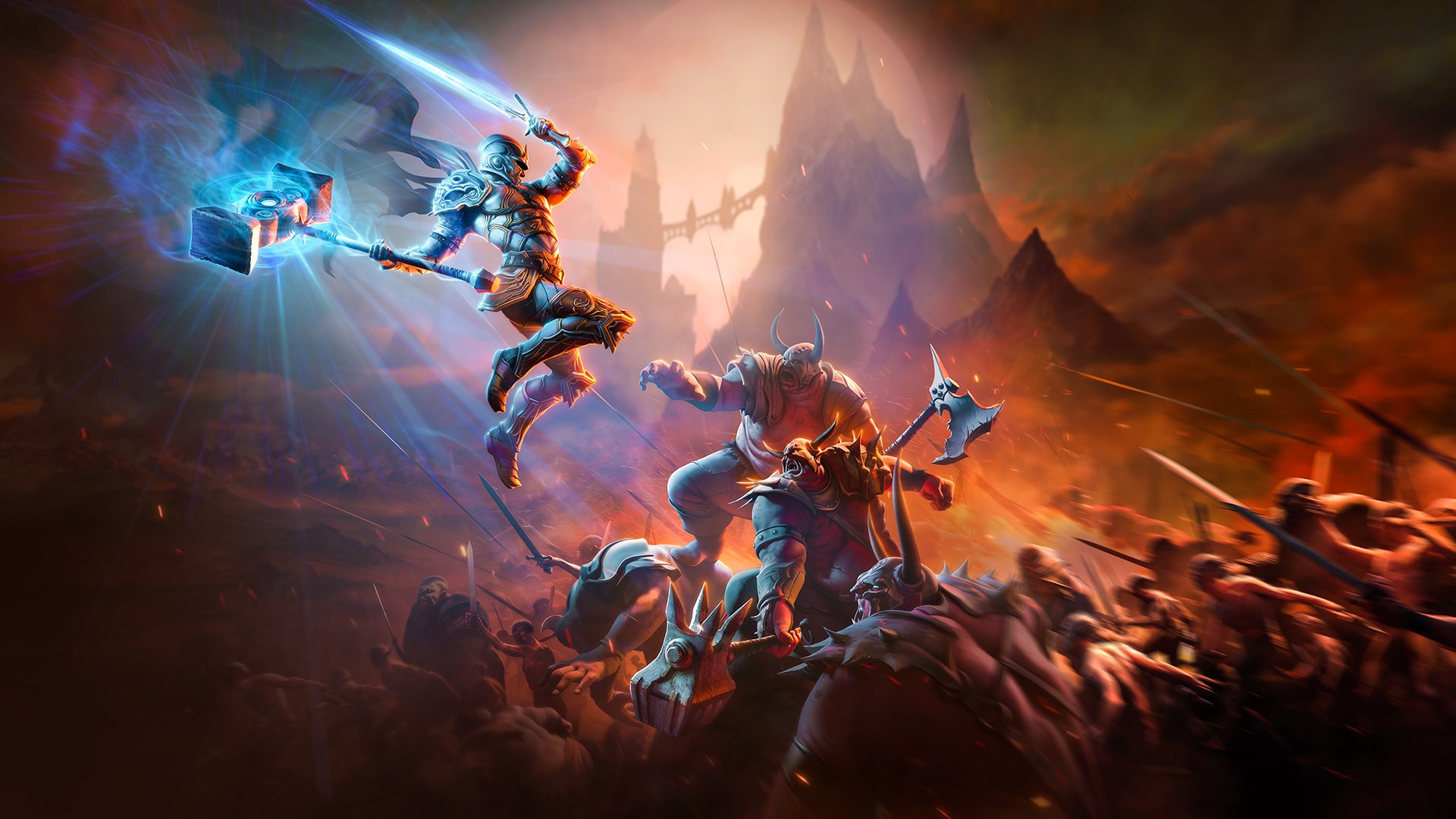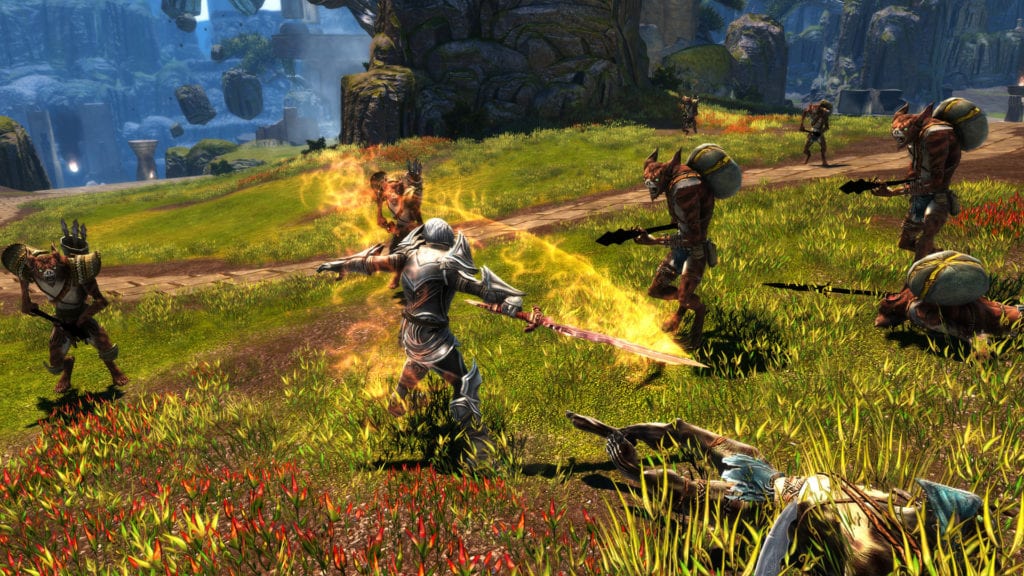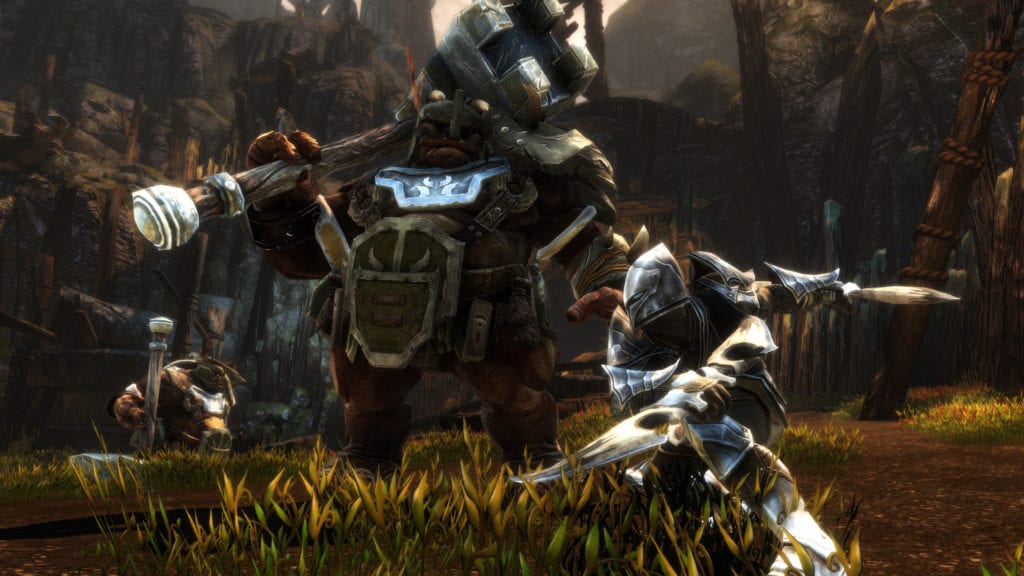Title – Kingdoms of Amalur: Re-Reckoning
Platforms – PS4, Xbox One and PC
Release Date – September 8th, 2020
Developer – KAIKO, Big Huge Games
Publisher – THQ Nordic
MSRP – $39.99
ESRB – M for Mature
Disclaimer – This product is being reviewed on the PC. A review copy was provided by THQ Nordic for the purpose of this review. This review may also contain spoilers for certain gameplay and story elements. Watch at your own risk, you have been warned. Gaming Instincts is an Amazon Affiliate and does gain financial benefits if you choose to purchase this product on this page.
Kingdoms of Amalur: Reckoning was released eight years ago, in February 2012. Fast forward to September 8, 2020 and fans of the this lovely hidden gem can now re-experience it, and this time with native 4K support, all of its previously released DLC, and most importantly on their PC, PlayStation 4, or Xbox One. Eight years is a long time, and gaming has changed in many ways, particularly in the RPG genre. The big question is whether Kingdoms of Amalur: Re-Reckoning worth $39.99 and if it still holds up today in terms of visuals and gameplay mechanics.
What is Kingdoms of Amalur: Reckoning?
The original Kingdoms of Amalur was developed by Big Huge Games in a span of three years in 2009 and later released on February 7, 2012. In May of that year, the studio laid off its entire staff and was shut down and then ended up being revived by Reynolds and Train. Later, it was bought out by Nexon after DomiNation’s massive success in 2016. Big Huge Games released another title earlier in 2020 called Arcane Showdown, which also had a successful launch. The studio is now responsible for maintaining both of those titles on mobile and Steam while creating new projects behind the scenes.
Kingdoms of Amalur: Re-Reckoning is set in a typical fantasy world, but perhaps more on the lighter side of fantasy rather than dark fantasy like Dark Souls. Think of Kingdoms of Amalur more like a fairy tale fantasy RPG that was heavily inspired by Fable in terms of its art direction and feel. The game’s premise is based upon a hero whose fate is not decided by the gods. Rather, the hero decides his own fate after being revived by the Well of Souls. The hero’s objective is to figure out what’s happening, who they are, and to hunt down the evil Fae King known as Gadflow and his follower Tuatha Deohn.
The game begins right after the hero is revived by the Well of Souls in a tower. Once the first cut-scene is over players are a given a choice between different races, such as Almani, Varani, Ljosaltar, and Dokkalfar, and each of these races have different racial bonuses that give boosts to certain stats: lockpicking, merchantile, detect hidden, and more. The game let’s players decide at the beginning what kind of character they want to start building.
The first five-to-ten minutes of playtime introduces and teaches gamers different mechanics, combat systems, traversal, and equipment, such as how to operate their character using melee weapons, range weapons such as the bow and staff, magical abilities, stealth and more. During those early moments, players encounter a mini-boss before the game spits them out into the more open-world regions, where they can finally embark upon their main quest, a ton ton of side quests, random mob encounters, and exploration.
Gameplay, Combat and Questing
Kingdoms of Amalur: Re-Reckoning plays like a traditional RPG. There’s a typical leveling system, where players put points into skills and abilities, and choose how they want to combine their destinies. Skills act as passive bonuses, such as Merchantile, which makes the player-character better at bargaining with in-game vendors or the Persuasion skill that gives players a higher success percentage when it comes to dialogue choices to gain extra items from the NPCs encountered in the world.
Then players have the choice of their abilities in different talent trees, including Might (Melee), Finesse (Range), and Sorcery (Magic). Each of these trees offer different play-styles, or if gamers choose to do a combination of abilities from the three different trees then they may do so, but then players will just become a hybrid rather than proficient in a single tree. The fun and exciting part of the leveling system comes from the destinies system.
The destinies system allows players to pick different paths for their character, and they may change them to something later on if they do not like it. For example, players can have a certain amount of points in Might and in Finesse, and if they have enough required points they may choose a destiny that gives them special stat bonuses for their build that combines both of those trees. There are many selections in the game, and this allows users to have interesting, varied builds, such as being a Battlemage, which requires players to have a certain amount of points in both the Might and Sorcery tree. There is even a destiny that requires gamers to have points in all of the three available tress. More traditional players who prefer pure specs may also choose destinies that only require Might, Sorcery, or Finesse. Overall, the leveling system is fun to experiment with, especially when min/maxing. While the game may or may not have a meta build, it’s still worth experimenting for the replay value or the fantasy aspect.
The combat system in Kingdoms of Amalur: Re-reckoning is basic. There are different types of weapons, such as Longsowrds, Greatswords (two-handed), Hammers, Chakrams, Staves, Bows, Daggers, and others that have their own combos, moves, and new abilities as players level up. For the most part, gamers will be mashing the X button (Xbox Controller) for their primary weapon attacks and Y for the secondary weapon. The hero can equip one primary weapon with one secondary. Primary weapons are Longswords, Greatswords, Hammers, and Daggers, while secondary weapons are Chakrams, Bows, and Staves, and players may use both mid combat and combo attacks if they wish, assuming that they know how the timing of the attack animation frames works. Gamers may also equip a shield that is a separate slot that lets them block incoming attacks.
Overall, the combat feels like a traditional hack’n’slash action game with a big mix of RPG elements, such as having stats, leveling, and access to magical abilities. The combat is more action, though, rather than RPG, and if that’s what a player prefers then they are in the right place. Although, considering how old the game is, the way the combat works may or may not feel a tad outdated, as the game doesn’t feature any special combat techniques, or modern engine updates that allow for more fluid combat animations and faster pacing. The battle system shows the game’s age, but that’s not necessarily a bad thing.
Questing in Kingdoms of Amalur: Re-Reckoning is nothing new. Players go to a town, pick up quests from NPCs with an exclamation point on their head and go off on their adventures. The tasks usually range from killing specific mobs in the world, stealing something from a chest, hunting a group of enemies, finding healing potions for the sick, or going off into a dungeon and clearing it out to find whatever item required for a specific quest giver and then rinse and repeat. Traditional RPG stuff and nothing new, but that’s to be expected given this is a remaster of an older game and not a full-fledged remake. Most modern RPGs still follow these types of systems and probably will for a long time, at least until next-generation consoles arrive and the technology can finally create something new and innovating for questing and AI systems in future RPGs.
There was one interesting instance that did happen during a playthrough: a quest where the objective was to steal a special alchemy potion inside of a castle full of guardsmen that would go hostile if they catch the player stealing. Kingdoms of Amalur: Re-Reckoning has a crime system that’s somewhat similar to Elder Scrolls and Fable. However, when committing a crime in front of the guards, quest giver became hostile after the guards were killed. After committing a theft and murder, players may be greeted with a “Quest Failed” notification, which is interesting, because in most RPGs players cannot kill any quest givers with a few exceptions, such as the recently released Outer Worlds. Stuff like this is usually what makes RPGs fun and interesting.
The game also has a crafting system called Sagecrafting that allows players to combine different shards found in the world. These shards may range from physical based shards, magic, and so on, and if gamers combine these shards at a Sagecrafting forge, they can create gems they may socket into equipment. The gems are divided into two categories: weapons and armor, which means if players craft a gem in the weapon category, they may not socket it into an armor piece and vice versa, so they are unique to one another and users have to play the crafting rules accordingly to achieve the build they want. Socketing gems into gear is nothing new for RPGs, but it’s done well and is easy to understand in Kingdoms of Amalur: Re-Reckoning, which adds more depth to players’ builds.
Visuals and Technical Flaws
The biggest disappointment with Kingdoms of Amalur: Re-Reckoning, unfortunately, comes from the technical side of things rather than visuals. Visually speaking, because the game is colorful and features a fairy tale fantasy world, it has aged well and still looks decent considering the game’s age thanks to its art direction. However, the 4K native resolution doesn’t make much of a difference, especially when players have LODs pop in the distance on modern PC hardware. The game was reviewed with a 12-core Ryzen CPU with a 1660 TI and ran at silky smooth 60 FPS in the outdoor world, with indoor running even higher.
Everything was maxed out and there was no crashing, but the glaring pop-ins were unpleasant, and there was a noticeable frame rate drop here and there during certain combat situations. An eight-year-old game should be optimized and remastered somewhat better than what it is in the final code eight years later. The game still felt great to play and for the most part had no issues, but these small annoyances were just strange to see and not something expected out of a remastered version of an eight-year-old title.
Conclusion
Kingdoms of Amalur: Re-Reckoning is a nice comeback for RPG fans. It’s a game that not many people got to experience and is considered to be a hidden gem when it was released in 2012. Now, everyone will finally be able to get their hands on it and see why the game was fun and exciting in the past. However, there are times when the game may or may not feel outdated depending on players’ preferences. If someone is longing for an old-school RPG with action oriented combat and a variety of builds in a fairy fantasy world then Kingdoms of Amalur: Re-Reckoning is a fantastic bargain at $39.99, despite some of its small technical flaws. If someone is looking for that big triple-A RPG that will blow their socks off then they will be disappointed and will need to look elsewhere, such as Cyberpunk 2077, or wait for Microsoft’s next big RPG titles: Awoved and Fable, which are both years away. Overall, Kingdoms of Amalur: Re-Reckoning is still a nice package recommended for the core RPG audience, if they are okay with having an open mind and enjoy old-school mechanics.






